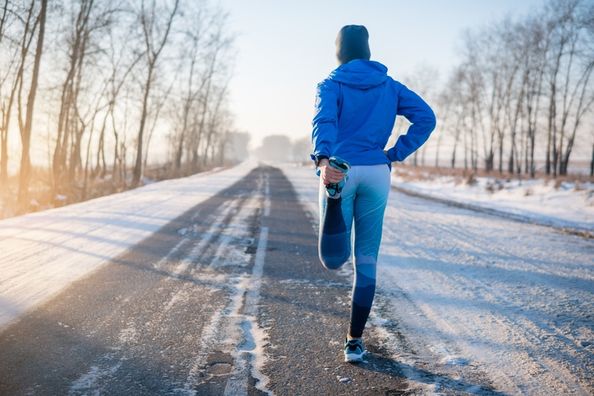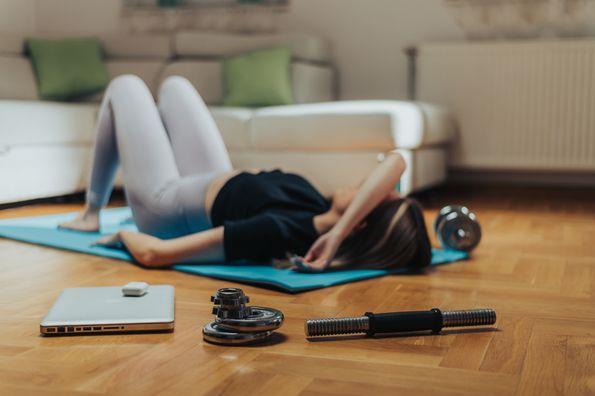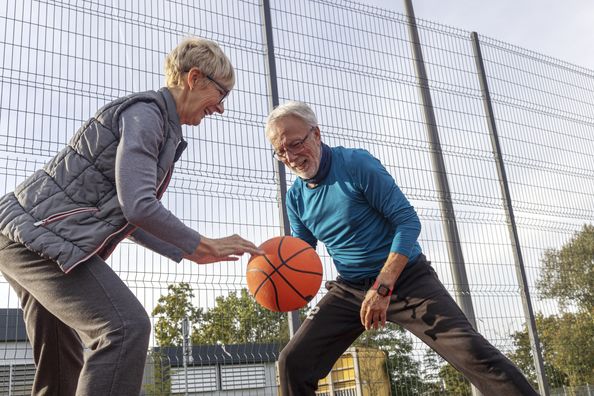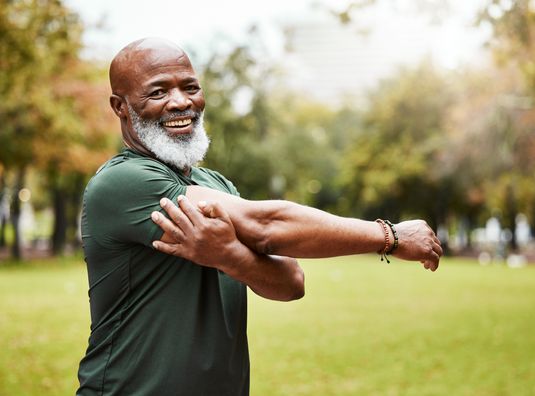Winter brings shorter days, colder weather and slippery sidewalks, but it doesn’t have to bring an end to your outdoor activity. Believe it or not, you can keep your workout routine going on cold and snowy days as long as you do it safely and prepare appropriately before you head outdoors. Here, Dr. Brian Ward, orthopaedic surgeon, and Michael Czuba, sports physical therapist and athletic trainer, provide tips on how to prepare for outdoor exercising and activity to avoid injury and to maximize your workout.
How cold is too cold?
Your body can withstand temperatures colder than some might think. The American College of Sports Medicine contends that “exercise can be performed safely in most cold-weather environments without incurring cold-weather injuries” to wind chill temperatures of ‑18 degrees Fahrenheit. 1 It’s important to identify cold-weather hazards and monitor your body to identify signs of weather-related conditions like hypothermia and frostbite. And, even though it might be safe, you may choose to exercise indoors on those days where the wind chill dips into the negatives.
It may also be helpful to consider moving your workout to later in the day when your body temperature and outdoor temperature tend to be warmer. Also, if you suffer from asthma, heart disease or any other medical condition, be sure to clear any exercise program with your physician first.
Best Winter Exercises
Winter weather doesn’t mean you have to stop your favorite exercise routine. Even with snowy or cold weather you can still walk, run, hike and even bike ride to keep in shape, though you may need to do a little research to find a route or path that works with the winter conditions.
If you’re looking to change up your workout routine, winter is a great time to do so. There are many weather-related exercise activities you can’t do at any other time of year, so make the most of it by taking advantage of what the season has to offer:
- Ice-skating
- Cross-country skiing
- Snowshoeing
- Shoveling
- Even a snowball fight with family or friends increases heartrate and burns calories
Gearing up
No matter the activity, be sure to gear up appropriately to avoid health risks like frostbite, hypothermia and other bodily injuries. Dress for outdoor exercise success by layering up and remember that it’s normal to feel cold at first since your body warms up with motion.
- Inner layer of lightweight polyester to wick moisture away from skin
- Middle layer of fleece or wool to provide warmth
- Outer layer that is breathable but can repel wind and/or rain — make it reflective to be seen in the darker, shorter days
- Stay away from cotton — it holds moisture but not body heat
Don’t forget your head, hands and feet! Since blood flow stays concentrated in your core, your extremities can be more susceptible to the cold. Hats, gloves, warm socks and weatherproof footwear with good traction are recommended for outdoor cold-weather activity. Also, remember sunscreen, lip balm and sunglasses. It’s just as important to protect your skin and eyes from UV rays in winter as it is in the summer.
Avoiding Injury
Though generally safe, there are some increased risks of injury that come with exercising in the cold. With slippery or icy conditions, falls can be more likely, so take extra caution outside. Cold can also increase your likelihood of strains or tears due to lower elasticity in your muscles and connective tissue during the winter months. As a result, it’s critical to take a little more time for your body to fully warm up and cool down.
Warm-up
- Generally it’s recommended you take 20 minutes to warm up, starting slowly, before heading into the cold.
- A thorough warm-up prepares your body, raises your heart rate and elevates the temperature of your muscles, making them more pliable for better performance with reduced risk of injury.
- Incorporate aerobic and flexibility elements into your warm-up, making sure you do the aerobic portion first so your muscles are warm before they’re stretched.
Cooldown
- Don’t skip the cooldown after exercising; it promotes muscle recovery.
- Start your cooldown by gradually decreasing your intensity level until breathing and heart rate becomes normal. For example, if you’re running, start your cooldown by slowing to a jog then walk.
- Finish with stretching to reduce muscle tension and prevent injury, hitting muscle groups in your legs, arms, torso and back.
It also helps to remove sweaty, wet clothing and footwear to prevent lowered body temperature after exercise and a blanket can help warm your body up quickly. Be sure to keep hydrated during and after your workout, too. Even if you don’t feel as hot or thirsty in the cold, you do lose fluids rapidly, so be sure to replenish them regularly.
Outdoor activity in cold weather can be safe and fun with the proper precautions and preparations. Be sure to monitor the changing weather conditions, dress appropriately, incorporate thorough warm-up and cooldown and hydrate regularly to stay safe and injury free.
If you have additional questions about cold-weather exercise or would like to see an orthopaedist or physical therapist, click here to schedule an appointment online.
1American College of Sports Medicine position stand: prevention of cold injuries during exercise. Castellani JW, Young AJ, Ducharme MB. Medicine and science in sports and exercise, 2007, Jan.;38(11):0195 – 9131.
Health Topics:








